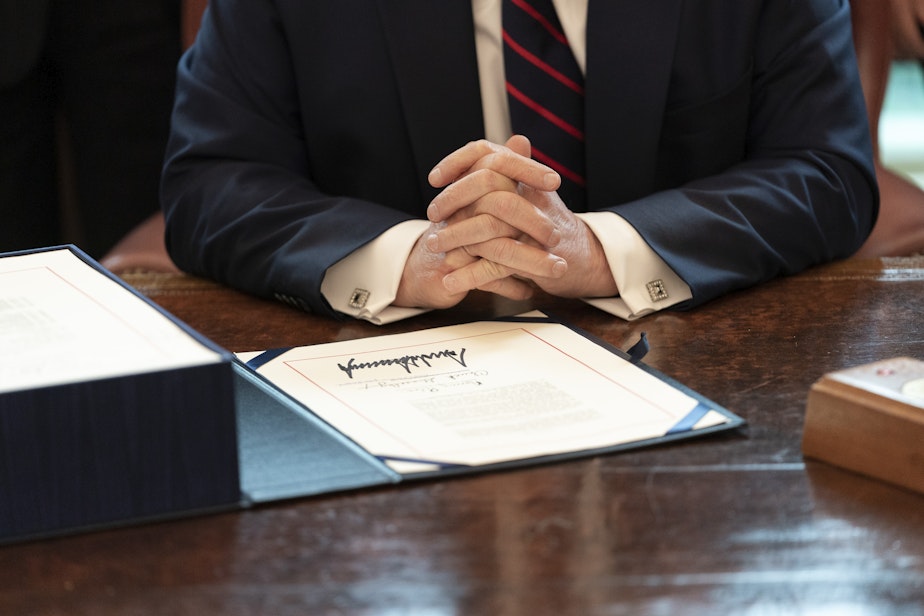Federal unemployment aid is coming to an end, but the economic crisis persists. What’s next?

Unemployed people in our state are about to lose $600 a week. This is money that the federal government has been adding to unemployment checks during the pandemic.
Now, that program is coming to an end, even though the economic crisis is not over.
KUOW’s Carolyn Adolph explains.
The CARES Act, which has this $600 per unemployed person in it, was thrown together really quickly. It was only ever meant as a short term fix — it was a crisis response. We thought if we could put everyone who was unemployed on a strong intravenous drip of money, keeping people home and not going to work, we could put the economy into a medically induced coma, beat the virus back, and then bring the economy back.
We had a strategy based on short-term relief. There was even some stimulus, and it had some effect in supporting spending. The $600 a week was part of it, but something else is happening. I talked to Debra Glassman, an economist at the University of Washington. We talked about how it didn't happen. We didn't beat the virus back. It's still here. And now we're seeing these waves:
Sponsored
“If the first phase was the crisis response, with a time frame of two or three months, the second phase is one with waves. We're going to be in a period where now we have to deal with the fallout from the negative economic effects on the economy. In other words, we are already in a recession,” Glassman said.
Recessions start to have consequences, rolling effects through the economy — we're seeing that now. A big uptick in new unemployment claims this week shows us the damage is spreading. And, Microsoft is at the top of the economic food chain, but it's quietly laying off people. It's not huge, but it's starting to happen.
Now, Glassman says what we need to stimulus. The patient, our economy, is not fully out of the coma. They've forgotten how to walk, they’re limp, they need to be reanimated, and just how to do that, and how many trillion in borrowed money it's going to take to keep the economy on the mend has yet to be decided upon.
So, even though the $600 bump up in people's unemployment benefits is stopping July 25, when the congressional approval ends, something needs to be decided, and hasn't been.
Sponsored
When a person is on unemployment, it only pays for part of what they used to make. Glassman says, when you look at what unemployment pays weekly, as a sort of a national average, this is what you see:
“The national average is about $375. The national average weekly wage is about $975. We can see the logic that do you want it to keep people afloat you want it to maintain them at their average weekly wage, you would add this bump of $600 on top of the unemployment compensation that they would ordinarily expect to get.”
There are calls to reduce the amount in some way. If that happens, will there be more stimulus checks, like that one-time payment of $1,200 that lots of us got close to the beginning of this crisis? Glassman says that 69% of the American economy is driven by consumer spending, so there can be no stimulus without giving people money to spend.
Sponsored
Congress has to decide [what comes next], and they have an August recess scheduled. We're not seeing any signs that they know what the plan is. That means there's likely to be a lag as we move from the crisis response of old to a stimulus response now, and that's going to be more stress and uncertainty for a lot of people. The big thing is, we're entering a new phase of the economic effects of the pandemic. We're moving into a longer grind.
This interview has been edited for clarity. Listen to the interview by clicking the play button above.




